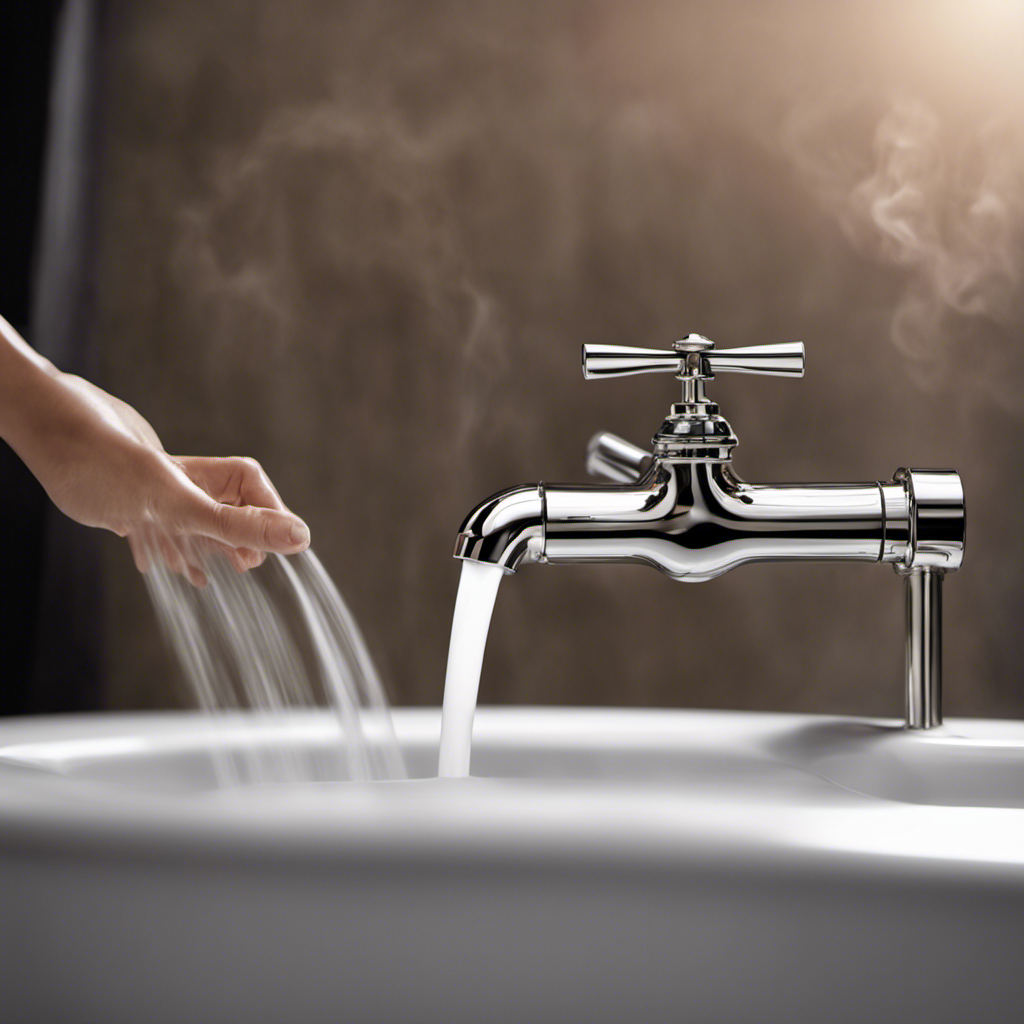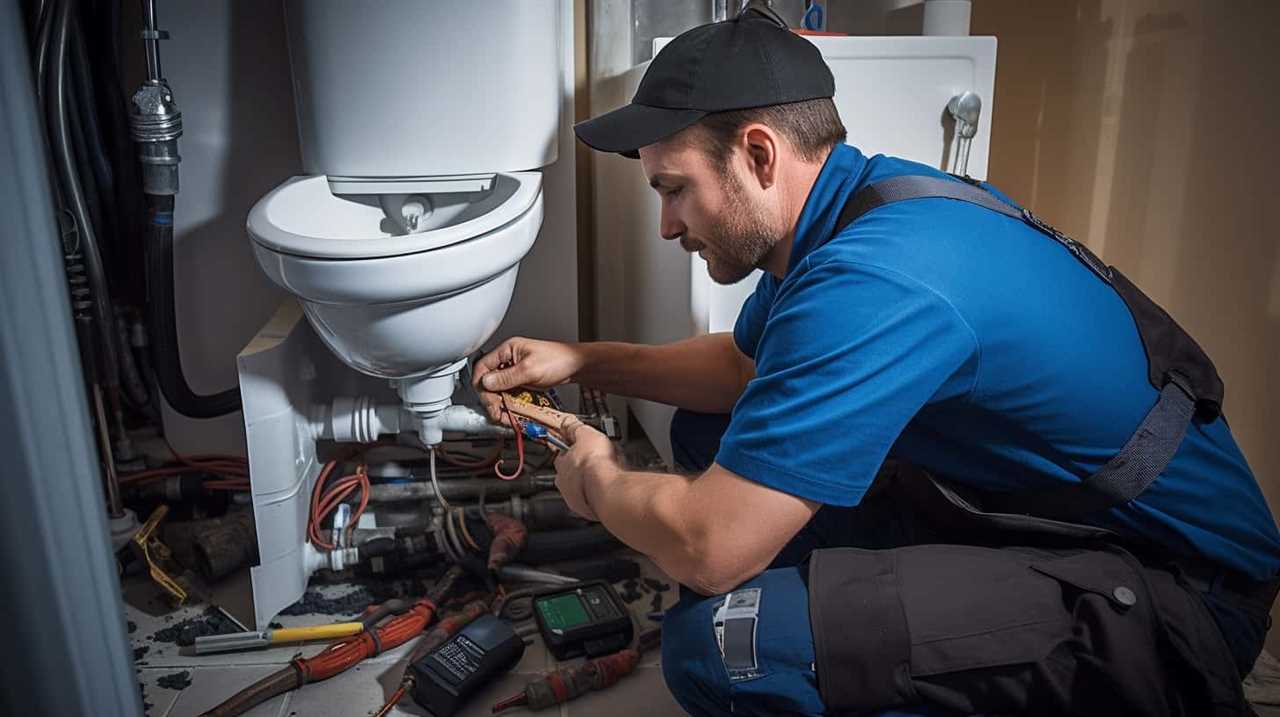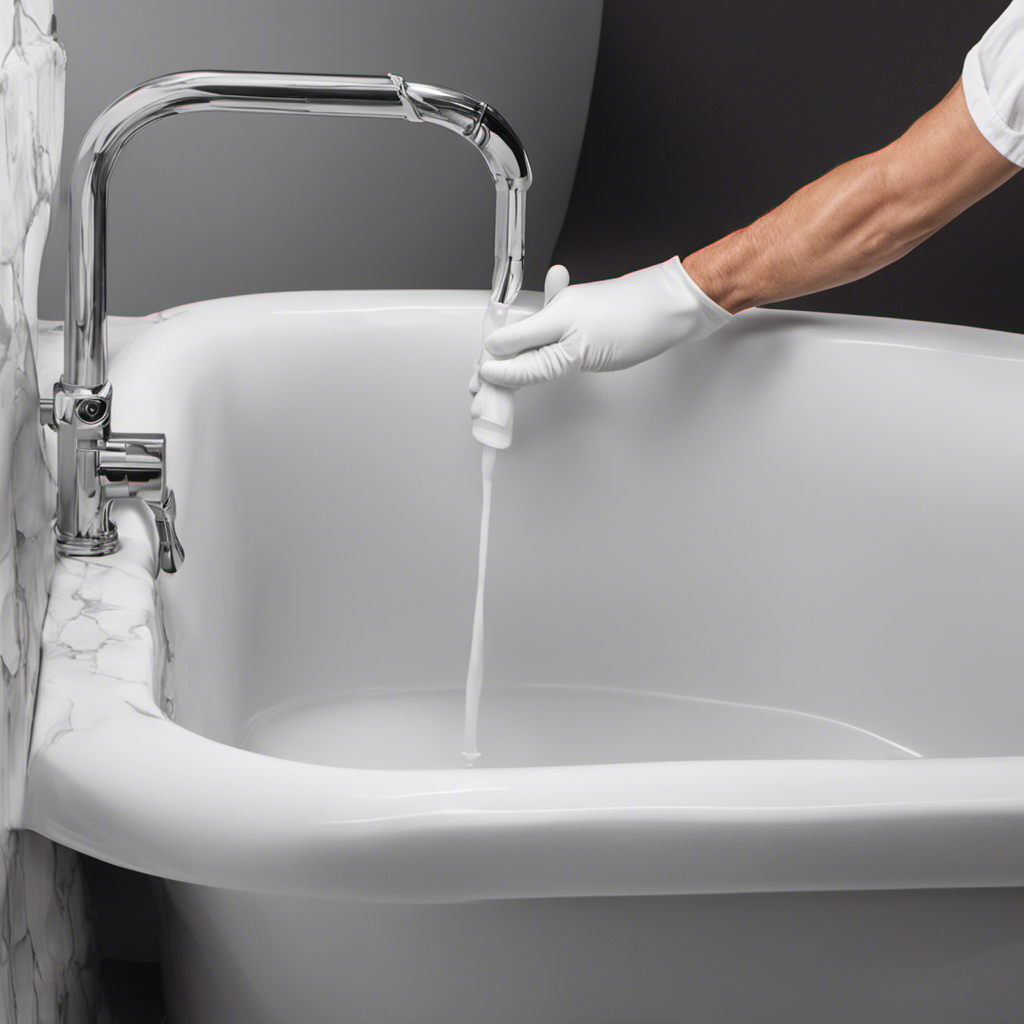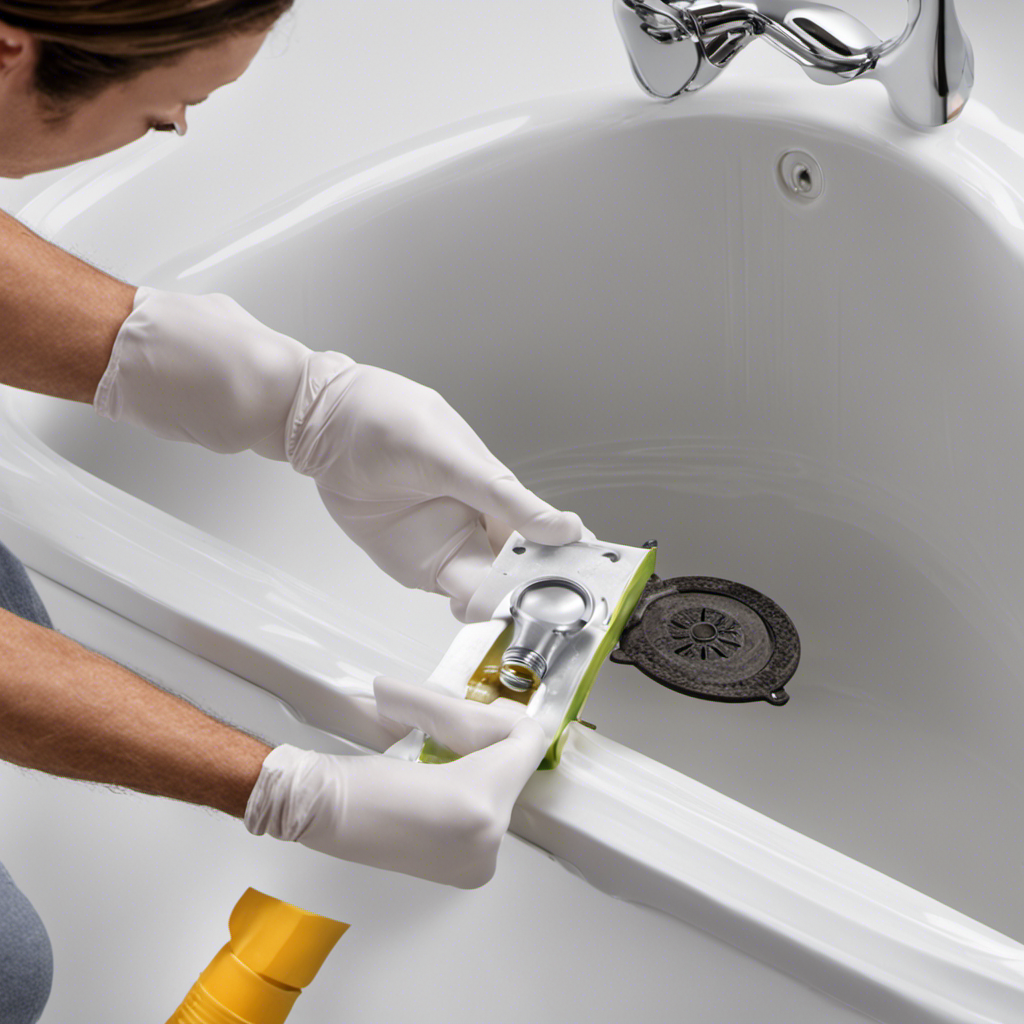As I step into the warm embrace of my bathtub, I can’t help but wish for the water to be hotter. There’s something incredibly soothing about immersing oneself in steaming water, melting away the stresses of the day.
In this article, I will guide you through the process of making your bathtub water hotter. From adjusting your water heater settings to exploring alternative heating methods, we will delve into the realm of possibilities, ensuring your bath time is truly blissful.
Key Takeaways
- Water temperature regulations ensure a safe bathing experience.
- Adjusting water heater settings can prevent overheating and ensure a suitable temperature.
- Utilizing insulation techniques improves water heater efficiency and reduces energy consumption.
- Adding hot water accessories enhances the bathing experience and ensures comfort.
Understanding the Temperature Limitations
To make the bathtub water hotter, it’s important to understand the temperature limitations. Water heating safety and water temperature regulations play a crucial role in ensuring a comfortable and safe bathing experience.
The Consumer Product Safety Commission (CPSC) recommends keeping the water temperature below 120 degrees Fahrenheit to prevent burns and scalds. Most water heaters have a temperature control dial that allows adjusting the hot water temperature. It’s essential to set the water heater at a suitable temperature to avoid overheating the water.
Additionally, installing anti-scald devices, such as thermostatic mixing valves, can help regulate the water temperature and prevent sudden changes that could lead to injuries.
Adjusting the Water Heater Settings
Adjusting the water heater settings can help you increase the temperature of your bathtub water. Here are three steps to increase efficiency and adjust the thermostat:
-
Locate the water heater: The water heater is usually found in the basement or utility closet. Look for a cylindrical tank with pipes attached.
-
Access the thermostat: On the front of the water heater, there should be a temperature dial. Use a screwdriver or your fingers to adjust the temperature. Be cautious not to set it too high, as this can be dangerous.
-
Test the water temperature: After adjusting the thermostat, turn on the bathtub faucet and let the water run for a few minutes. Use a thermometer to check the temperature. If it’s still not hot enough, repeat the process and make further adjustments.
Utilizing Insulation Techniques
Utilizing insulation techniques can help improve the efficiency of your water heater and reduce energy consumption. Selecting appropriate insulation materials is crucial for achieving optimal results. Look for insulation materials with a high R-value, which indicates better thermal resistance. Common options include fiberglass, foam pipe insulation, and reflective insulation.
Proper installation techniques for insulation are also essential. Start by measuring the water heater and its pipes to determine the amount of insulation required. Cut the insulation materials to fit the measurements, ensuring a snug and secure fit. Use tape or adhesive to hold the insulation in place.
Insulating the water heater tank and hot water pipes will minimize heat loss and keep the water hotter for longer periods. Transitioning into the subsequent section about adding hot water accessories, enhancing insulation techniques is just the first step towards achieving hotter bathtub water.
Adding Hot Water Accessories
Installing hot water accessories in your bathroom can greatly enhance your bathing experience. By incorporating these accessories, you can have better control over the water temperature, ensuring a comfortable and enjoyable soak every time. Here are three essential hot water accessories to consider:
-
Thermostatic Mixing Valve: This valve allows you to adjust the water temperature precisely, preventing scalding or freezing water. It maintains a consistent temperature throughout your bath, providing a relaxing and safe experience.
-
Digital Shower Controller: A digital shower controller allows you to set and monitor the water temperature digitally. It offers precise control and eliminates the guesswork of adjusting the temperature manually.
-
Instant Hot Water Dispenser: This accessory provides hot water on demand, eliminating the need to wait for the water to heat up. It is perfect for filling your bathtub quickly and efficiently.
By incorporating these hot water accessories, you can create a customized and comfortable bathing experience.
However, if you’re looking for alternative heating methods to enhance your water temperature even further, let’s explore some options.
Exploring Alternative Heating Methods
If you’re looking to enhance your bathing experience even further, there are alternative heating methods worth exploring. Instead of relying solely on traditional methods, such as hot water accessories, you can consider utilizing solar powered heating or geothermal options. These methods not only provide a more environmentally-friendly approach, but they can also help you achieve a higher water temperature in your bathtub.
Solar powered heating systems utilize the energy from the sun to heat the water. By installing solar panels on your roof or in your yard, you can harness the power of the sun and convert it into heat for your bathtub. This method is not only cost-effective in the long run, but it also reduces your carbon footprint.
On the other hand, geothermal options use the natural heat from the earth to warm your water. By tapping into the earth’s thermal energy, geothermal systems can provide a consistent and reliable source of heat for your bathtub. These systems typically involve drilling wells and installing heat pumps to transfer the heat to your water.
To compare the two alternative heating methods, here’s a table that highlights their main features:
| Heating Method | Solar Powered Heating | Geothermal Options |
|---|---|---|
| Energy Source | Sun | Earth’s thermal energy |
| Cost | Initial investment in solar panels | Initial drilling and installation costs |
| Environmental Impact | Low carbon footprint | Low carbon footprint |
| Reliability | Depends on sunlight availability | Consistent and reliable |
| Maintenance | Minimal | Minimal |
Conclusion
In conclusion, by following the steps outlined in this article, you can successfully make your bathtub water hotter.
Remember, understanding the limitations of your water heater and adjusting its settings accordingly is crucial.
Additionally, utilizing insulation techniques and incorporating hot water accessories can further enhance the temperature of your bathwater.
And if you’re feeling adventurous, exploring alternative heating methods can provide even more options.
So go ahead, indulge in a luxurious and soothing hot bath, and let the warmth wash away your worries.
Just remember, sometimes, finding ways to make things hotter can also be a metaphor for adding passion and intensity to our lives, urging us to step out of our comfort zones and embrace new experiences.










